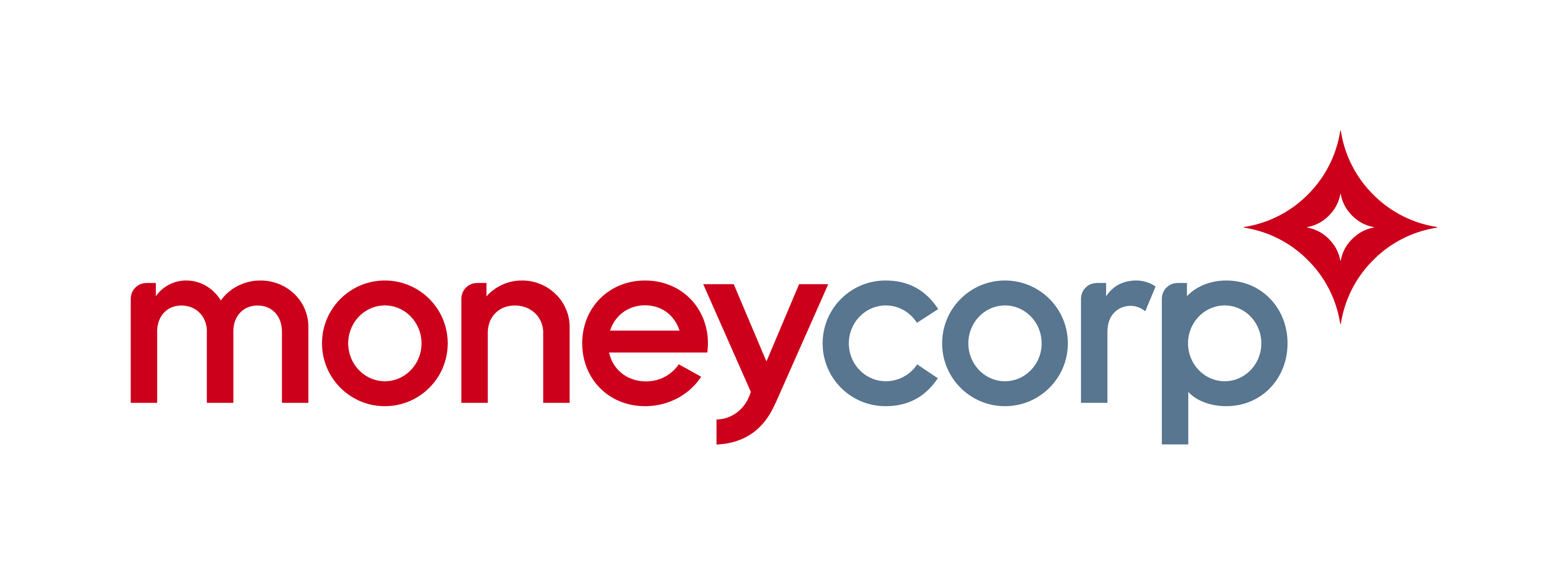Weekly Brief

A pause from the ECB and BoC?
11 minute read20 October 2023
GBP
Further evidence of sticky UK inflation could give the BoE cause for concern after headline Consumer Price Inflation (CPI) held firmly at 6.7% on an annual basis during September. Core inflation, on the other hand, ticked moderately higher, rising from 6 to 6.1%, albeit at a slightly lesser pace than had been expected. However, UK inflation still remains higher than that of France, Germany, the US and the EU-27 as a whole.
The UK now looks like it could meet the IMF’s recent expectation of having the highest level of annual inflation among G7 countries this year. The latest IMF forecasts also point to the UK maintaining that position into next year. Whilst headline inflation has been impacted (at least in the short term) by a recent spike in energy prices, consistent wage rises have also played a part in fuelling persistent inflation (see below) as businesses continue to battle to attract workers in the post-COVID era.
Reports this week showed the UK wage growth is now exceeding inflation for the first time in two years, which could point to the cost-of-living crisis beginning to ease. However, the latest figures from the labour market also reflected a sharp decline in job vacancies, which is an indicator of a weakening labour market.
The BoE’s task now will likely be to balance sticky inflation against a weaker labour market and a broadly weakening economic backdrop, reflected in data released this morning showing the decline in Retail Sales. Whilst there remains a high probability that the central bank is set to maintain its recent pause in rate hikes at the next meeting, the BoE will need to remain particularly vigilant in the short to medium term, especially if the recent energy price rises become entrenched.
This week the pound has stayed fairly flat despite GBP/USD having maintained a fairly constant downtrend since the middle of July. Overall, GBP/USD remains close to the 1.2100 region, slightly above the key 1.2000 psychological level. Looking ahead, next week is dominated by the latest UK employment report, combined with key PMI updates for both the Services and Manufacturing sectors.
EUR
German investor morale posted an unexpected boost this week, according to the latest survey released by the ZEW Institute on Tuesday. The economic sentiment index rose to -1.1 from -11.4 during the previous month and the expectations component of the survey increased for the third month in succession. Perhaps helping to spur the positivity has been a gradual slowdown in inflation throughout this year. However, there remain many pockets for concern. The recent Israel/Hamas conflict, for example, which could still help to fuel higher energy costs, were supplies to be impacted for a sustained period.
Having bucked the trend and raised Euro-area interest rates by 0.25% at the conclusion of its meeting last month, the ECB is expected to follow the recent trend elsewhere and pause rates at its current level at this month’s meeting next week. The ECB has hiked rates by 450bps overall since the middle of last year, but ongoing moderation in inflation has helped to ease the pressure for further rate hikes, with recent rhetoric from ECB officials seeming to back that up.
The single currency also looks set to post only its second upside week since July this week, with EUR/USD trading at 1.0575 (as of Thursday afternoon). Indeed, GBP/EUR has also declined below 1.1500 throughout the week, highlighting the single currency’s domination over the pound of late. Aside from the ECB meeting, which is likely to dominate price activity next week for the single currency, key PMI updates are also scheduled throughout the region.
USD
US Retail Sales exceeded expectations last month, rising by 0.7%, having been expected to increase by 0.2% over the period and after the previous monthly gain of 0.8%. That represented the sixth monthly increase in succession. The key Retail Sales control group also beat estimates comfortably, rising by 0.6%.
With Industrial Production also rising, evidence of a robust US consumer remains present, whose spending habits could be helping to reverse the previous concerns in the manufacturing sector. Industrial Production rose to its highest level in almost five years, aided in particular by gains in the mining sector.
The ongoing robustness of the data has helped to keep the chances of a further US rate hike before the end of the year on the table, even with ongoing speculation that the Fed has finished its hiking cycle. The broad financial conditions have also tightened considerably from the big increases in bond yields – something that Jay Powell nodded to during a speech yesterday.
At the time of writing, the current market-implied expectations for the upcoming Fed meetings are sitting at around a 96%* probability for a pause in November and at 62.3% for December’s meeting. Recent stronger economic data and higher energy prices could be contributing to the market’s more cautious outlook beyond this month.
*Source: CME markets. As of 19/10
Further evidence of a tight labor market was evidenced this week among the latest initial jobless claims, which dropped over the past week from 211K to 198K. Markets have been expecting wholesale increases in claims due to the impact of the Auto union strikes, but they have failed to make any meaningful impact on the data as of yet.
Whilst the labor market has remained tight and the consumer remains robust, the housing market is still feeling the impact of those multiple Fed rate hikes. The average 30-year fixed US mortgage is now at a two-decade high of 8%, which could sap demand into the future. Elsewhere in the housing market, the incoming data this week was more mixed, with a boost in Building Permits offset by a drop in Housing Starts.
The longstanding rally for the greenback has also somewhat plateaued of late, with the dollar index (DXY) moving between 105-107 throughout this month, which is consistent with a broad sea saw price backdrop for risk assets. Looking ahead, growth and inflation will dominate incoming economic data throughout next week, with the latest GDP update, followed by the Personal Consumption Expenditures (PCE) Price Index, which has been the Fed’s preferred measure for assessing US inflation for the past ten years or more.
CAD
The latest Canadian inflation data confirmed further moderation, with headline inflation rising by 3.8% on an annual basis during September, down from 4% previously. Core inflation also declined by 0.1% over the past month, having risen by 0.4% previously. Markets were not expecting the decline, with a survey from Reuters confirming analysts had expected inflation to remain at 4% over the period.
The recent moderation in inflation is now likely to reduce the prospect of a further BoC rate hike down the line, with the central bank expected to maintain Canadian rates at 5% at next week’s policy meeting. However, in spite of the recent downgrades in growth and continued worries over the Canadian consumer, the BoC are likely to maintain a ‘hawkish hold’ policy, given that there remain risks to the upside in inflation driven by higher energy costs at least in the short run.
The battle to influence the path forward for USD/CAD between the opposing forces of an ever-surging greenback and rising oil prices has been dominated by the greenback over the past week, with USD/CAD rising back over 1.3730, representing a two-week high.
AUD & NZD
Despite the ongoing strength of the greenback, it’s possible AUD/USD could be about to post an upside week for the first time since the beginning of September. Helping to underpin the recent strength in the Aussie has been incoming Chinese data, with GDP rising from 0.5 to 1.3% (QoQ) during Q3 and Retail Sales also exceeding estimates at 5.5% (YoY), up from 4.6% previously. Whilst there may be many doubts surrounding China’s ability to maintain robust growth in the long run, the short-term impact to the Aussie helped to drive AUD/USD to just below 0.6400 earlier in the week. Australia will fare well through the prospect of increased exports to China, which has fed into the strength of its currency.
The latest Australian employment update was mixed, with almost 40,000 full-time positions being shed during September, despite the overall unemployment rate dropping from 3.7 to 3.6% over the period. Perhaps aiding the decline in unemployment was a 0.2% decline in the participation rate, which slipped to 66.7%.
The minutes of the latest RBA meeting (pause) were also released earlier in the week, revealing how the RBA weighed up the option of increasing rates but determined “there had not been sufficient new information.” That will keep the door open to potential rate hikes in the future, should there be a significant shift in incoming economic.
There was more good news on inflation in New Zealand, with the latest update confirming yearly inflation has dropped from 6 to 5.6% during Q3. That drop represents a move to a two-year low and has helped to cement expectations that the RBNZ will maintain interest rates at the current level for the time being. NZD/USD continues to struggle, with the pair slipping below 0.5850 earlier this week, a level not tested since November last year. Next week’s data in the region will be dominated by the latest Australian inflation report.
Author
Joe Calnan - Corporate Dealing Manager
This commentary does not constitute financial advice and all quoted rates are sourced from Bloomberg.


